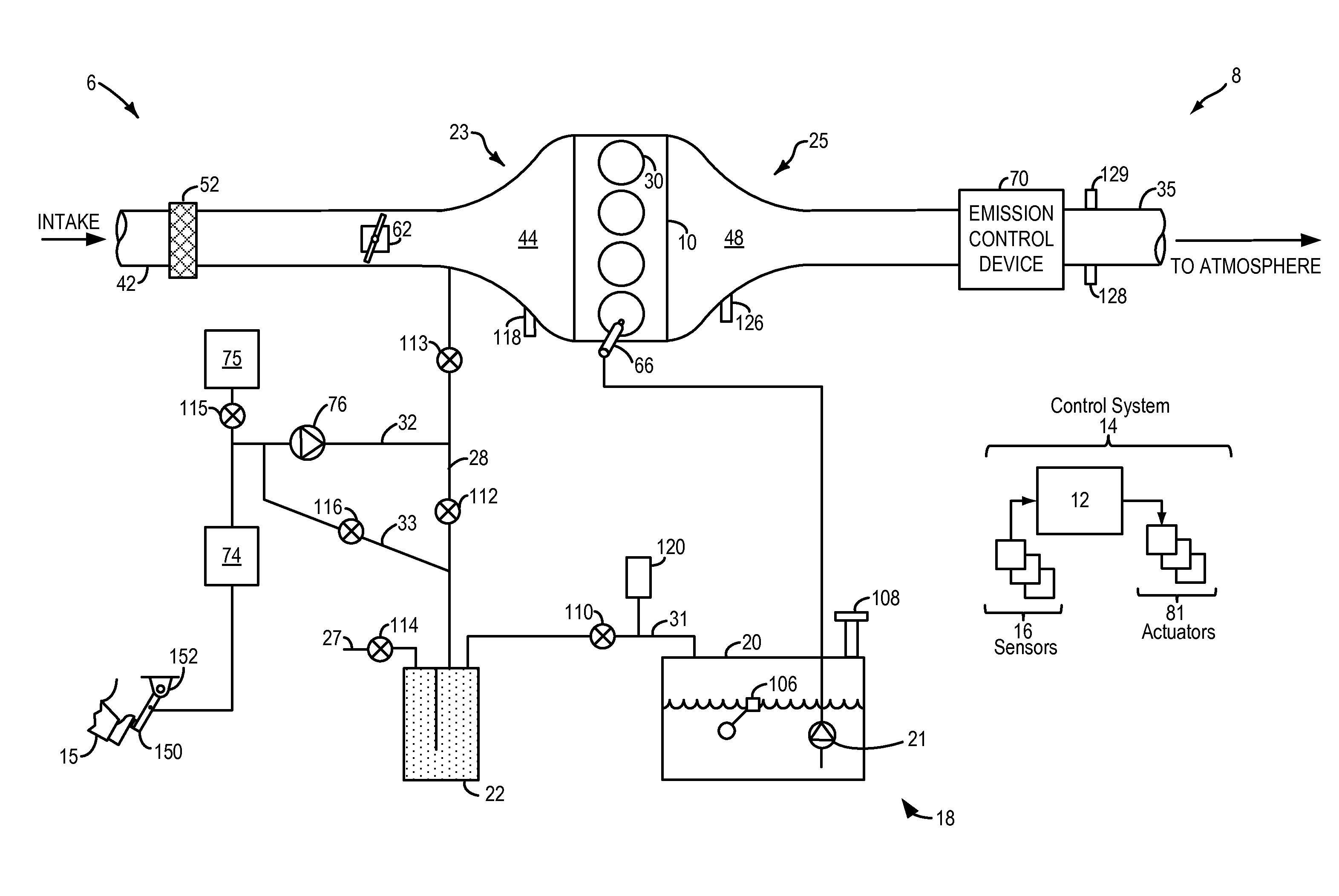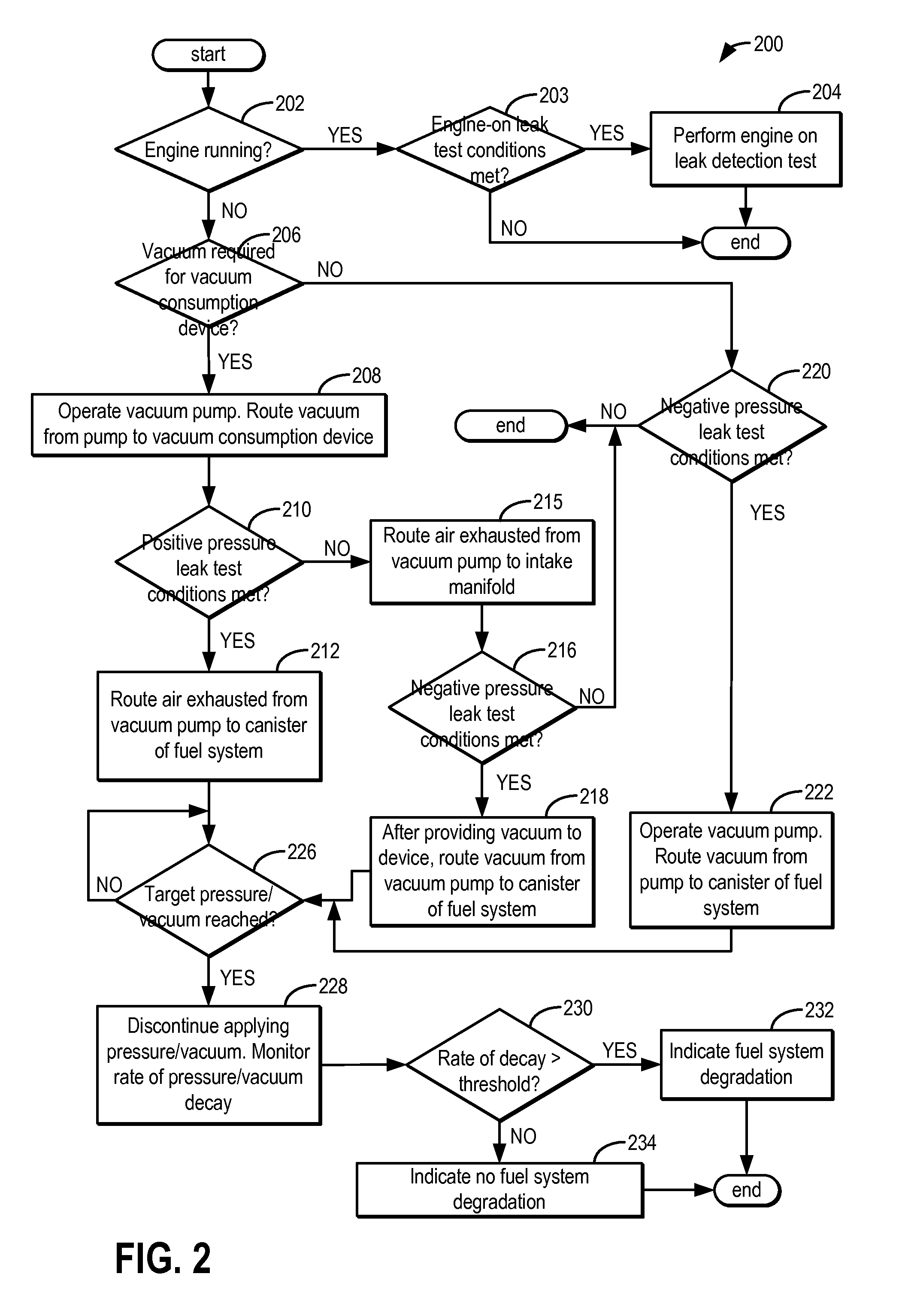Fuel system diagnostics
a fuel system and diagnostic technology, applied in the field of fuel system diagnostics, can solve the problems of reducing fuel economy, consuming vehicle power, and allowing fuel vapor to escape into the atmosphere, so as to improve leak detection accuracy, reduce component cost, and increase the life of the electrically driven vacuum pump.
- Summary
- Abstract
- Description
- Claims
- Application Information
AI Technical Summary
Benefits of technology
Problems solved by technology
Method used
Image
Examples
Embodiment Construction
[0013]Methods and systems are provided for identifying leaks in a fuel system coupled to an engine, such as the fuel system of FIG. 1. A positive pressure leak test may be opportunistically performed during actuation of a vacuum pump using air exhausted from the vacuum pump. A negative pressure leak test may be performed using engine intake vacuum or vacuum from the vacuum pump. A controller may be configured to perform a control routine, such as the example routine of FIG. 2, to route air exhausted from the vacuum pump, during conditions when the pump is actuated to provide vacuum to a vacuum consumption device of the engine system, so as to pressurize the fuel system. A fuel system leak may then be determined based on a rate of subsequent pressure decay. The controller may alternatively route vacuum from a running engine, or the vacuum pump, to a fuel system canister to apply a vacuum on the fuel system. A fuel system leak may then be determined based on a rate of subsequent vacuu...
PUM
 Login to View More
Login to View More Abstract
Description
Claims
Application Information
 Login to View More
Login to View More - R&D
- Intellectual Property
- Life Sciences
- Materials
- Tech Scout
- Unparalleled Data Quality
- Higher Quality Content
- 60% Fewer Hallucinations
Browse by: Latest US Patents, China's latest patents, Technical Efficacy Thesaurus, Application Domain, Technology Topic, Popular Technical Reports.
© 2025 PatSnap. All rights reserved.Legal|Privacy policy|Modern Slavery Act Transparency Statement|Sitemap|About US| Contact US: help@patsnap.com



